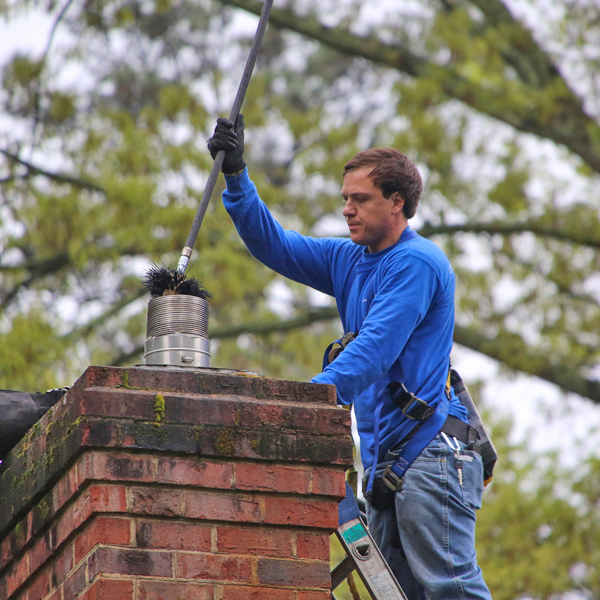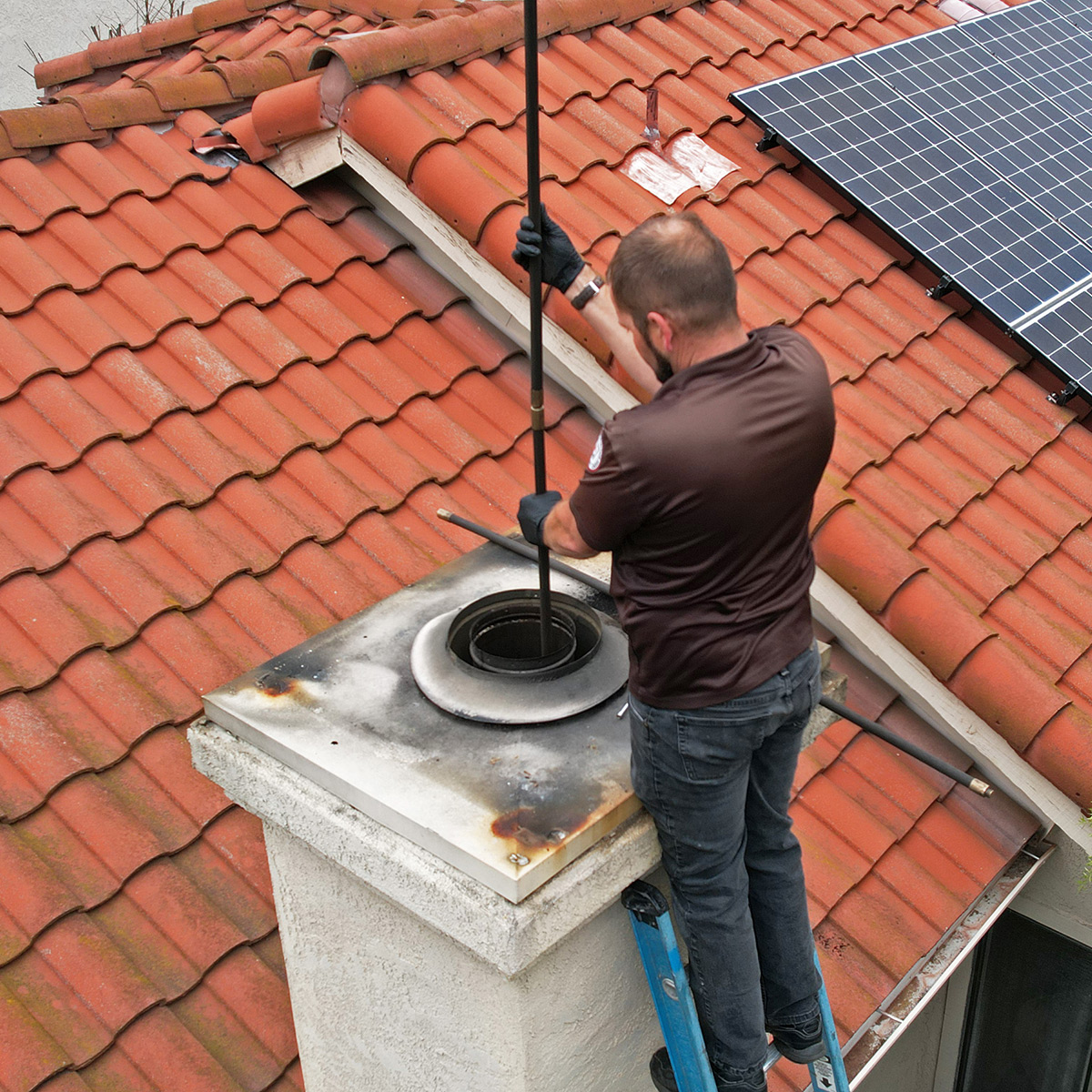Chimney Sweep San Jose Services: Your Relied On Partner for a Safer Home
Chimney Sweep San Jose Services: Your Relied On Partner for a Safer Home
Blog Article
The Hidden Dangers of Neglecting Chimney Sweeper and Upkeep
Ignoring chimney sweeper and upkeep can have extreme consequences that are usually overlooked by property owners. The surprise risks can range from chimney fires and poisonous gas release to structural damage and carbon monoxide poisoning. This is why it is vital to focus on normal smokeshaft maintenance and move solutions.
Smokeshaft fires are a typical threat caused by the buildup of flammable creosote within the chimney. Additionally, overlooking chimney upkeep can result in structural damage, including collapses and fractures, jeopardizing the safety and security and stability of the whole house.
By understanding the concealed risks and taking aggressive steps to ensure chimney sweeper and upkeep, house owners can shield themselves and their households from these possible hazards.
Chimney Fires
Chimney fires position a substantial danger to household buildings when regular sweep and upkeep are ignored. The accumulation of creosote, a very flammable material, within the smokeshaft can stir up and result in a dangerous fire.
When a chimney fire happens, the intense warmth can cause the flue floor tiles to fracture or collapse, permitting the fire to spread out to the bordering areas of your house. The flames can breach the chimney structure and prolong right into the wall surfaces or attic room, resulting in comprehensive residential or commercial property damage and possibly jeopardizing the lives of the occupants.
In addition, the smoke and toxic gases created throughout a chimney fire can present a major health and wellness danger. The breathing of these gases, such as carbon monoxide, can be deadly. Even if the fire is consisted of within the chimney, smoke can permeate into the home, contaminating the air and triggering respiratory system issues.
To avoid chimney fires, routine chimney sweeper and maintenance are important. Expert chimney moves can eliminate the built-up creosote and examine the smokeshaft for any type of indications of damages or clogs, ensuring that it remains in secure working condition. Disregarding these preventative actions can result in disastrous consequences for house owners, making chimney discharges a significant hazard that ought to never ever be taken gently.
Hazardous Gas Launch

The release of these toxic gases during a chimney fire can have serious repercussions. Firstly, the passengers of the property are at danger of breathing in these harmful gases, which can cause immediate illness or even casualties. The structural honesty of the building can be jeopardized as these gases can wear away metal elements, such as flue linings and chimney caps. This corrosion compromises the chimney system, making it extra vulnerable to collapse or more damage.
To avoid the release of toxic gases during a chimney fire, normal smokeshaft maintenance and move are vital. If required, this consists of routine evaluations, cleansing, and repair work. In addition, mounting carbon monoxide detectors can offer an early caution system for the existence of this deadly gas. By focusing on smokeshaft upkeep and sweep, homeowners can alleviate the threat of hazardous gas release and ensure the safety of their residents and property.
Structural Damage
One of the repercussions of ignoring chimney sweeper and maintenance is the capacity for significant structural damages. In time, the buildup of creosote, particles, and other substances in the chimney can cause different issues that endanger the architectural honesty of the entire system.
One of the key problems is the development of smokeshaft fires. When creosote, a highly flammable material, develops up inside the smokeshaft, it can result and ignite in a fire that can rapidly spread out to the remainder of the residence. The extreme warm created by these fires can cause severe damage to the chimney's stonework, leading to fractures, crumbling mortar, and also the collapse of the smokeshaft itself.
Additionally, disregarding chimney maintenance can cause wetness seepage. Leakages or splits in the see this website smokeshaft can allow water to go into, bring about water damages and degeneration of the chimney's framework. With time, this can compromise the blocks, mortar, and other products, creating them to break down and possibly collapse.
Additionally, the presence of animals and parasites in overlooked smokeshafts can also add to architectural damages. Chimney Sweep San Jose. Pets such as birds and squirrels can develop nests and leave debris that blocks the chimney and prevents appropriate air flow. This clog can result in a buildup of hazardous gases, reduced efficiency, and even architectural collapse
Carbon Monoxide Poisoning
Carbon monoxide poisoning is a possible threat that can occur from disregarding chimney sweep and maintenance. When a smokeshaft is not properly maintained or brushed up frequently, it can end up being obstructed or obstructed, stopping the proper ventilation of CO.
Exposure to high levels of carbon monoxide can be lethal. Signs and symptoms of carbon monoxide poisoning include frustrations, lightheadedness, problem, nausea or vomiting, and confusion breathing. In extreme situations, it can lead to loss of awareness, body organ damage, and even death. Babies, the elderly, and people with pre-existing respiratory conditions are particularly at risk to the results of carbon monoxide poisoning.
Regular chimney sweeper and upkeep are important to prevent carbon monoxide gas poisoning. An expert chimney sweeper can remove any obstructions or blockages, making certain that CO can securely exit the home. Furthermore, routine examinations can recognize any why not check here prospective issues or damages to the chimney that might add to CO build-up.
To safeguard yourself and your family members from the dangers of carbon monoxide gas poisoning, it is crucial to focus on chimney sweeper and upkeep. By doing so, you can maintain a risk-free and healthy and balanced living environment.
Creosote Build-up
A significant worry connected with overlooking smokeshaft sweep and maintenance is the accumulation of creosote. It is extremely flammable and can present major dangers to both the smokeshaft and the home if not effectively attended to.
Creosote accumulation happens when the by-products of burning, such as smoke, gases, and bits, great and condense on the inner walls of the chimney (Chimney Sweep San Jose). Gradually, this sticky deposit can set and build up, creating a thick layer that limits air movement and increases the threat of smokeshaft fires
Among the main threats of creosote build-up is the possibility for a smokeshaft fire. Creosote is highly combustible and can stir up at heats. Once ignited, it can shed at an extreme heat, potentially creating considerable damage to the chimney structure and infecting various other components of the home.
Along with the threat of fire, creosote buildup can additionally cause inadequate chimney efficiency. As the layer of creosote enlarges, it can block the flue, minimizing the air flow and avoiding correct air flow. This can trigger smoke to back up into the home, bring about breathing issues and carbon monoxide gas poisoning.

Verdict
Chimney fires can cause comprehensive damages to the framework and put lives at risk. In addition, the buildup of creosote can even more boost the threat of smokeshaft fires.
Smokeshaft fires are a typical danger triggered by the buildup of combustible creosote within the chimney.To prevent smokeshaft fires, regular smokeshaft sweeps and upkeep are important. Specialist look what i found chimney sweeps can eliminate the built-up creosote and evaluate the chimney for any kind of indicators of damage or blockages, making certain that it is in safe working condition.To prevent the launch of harmful gases throughout a chimney fire, regular chimney maintenance and sweep are vital. The extreme heat created by these fires can create extreme damage to the smokeshaft's stonework, leading to cracks, collapsing mortar, and also the collapse of the smokeshaft itself.
Report this page